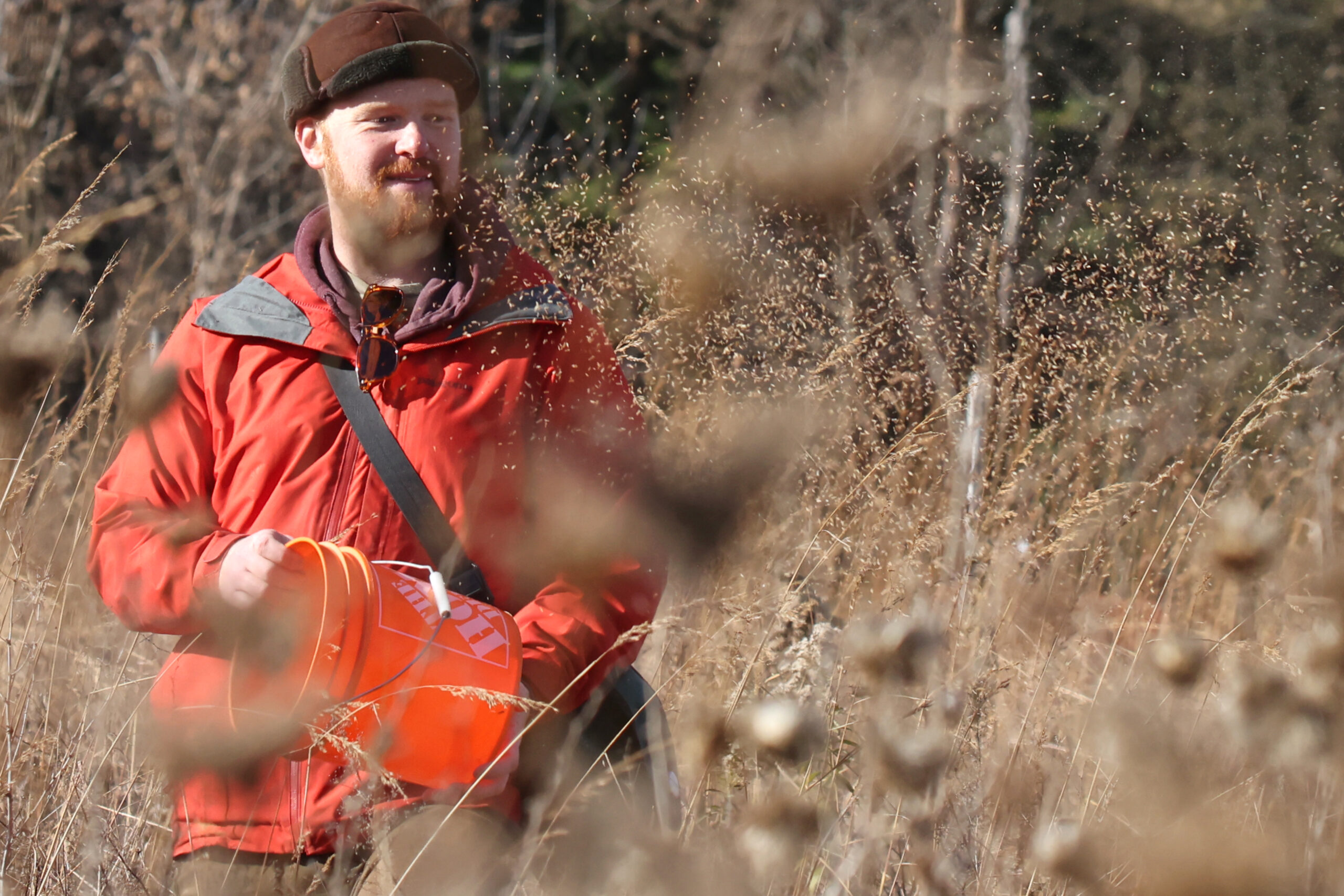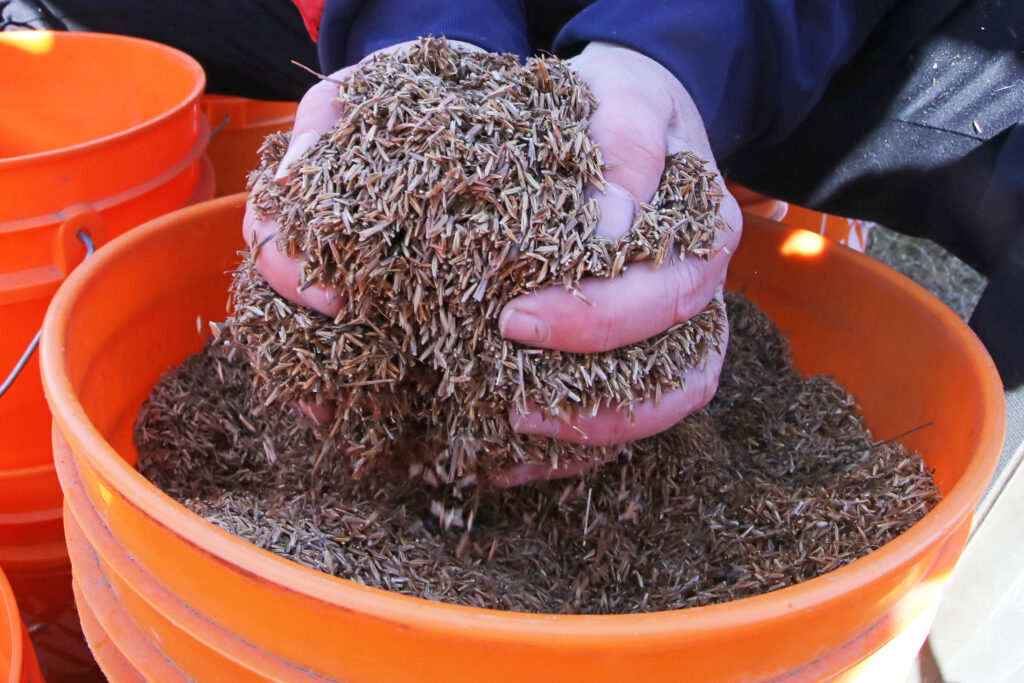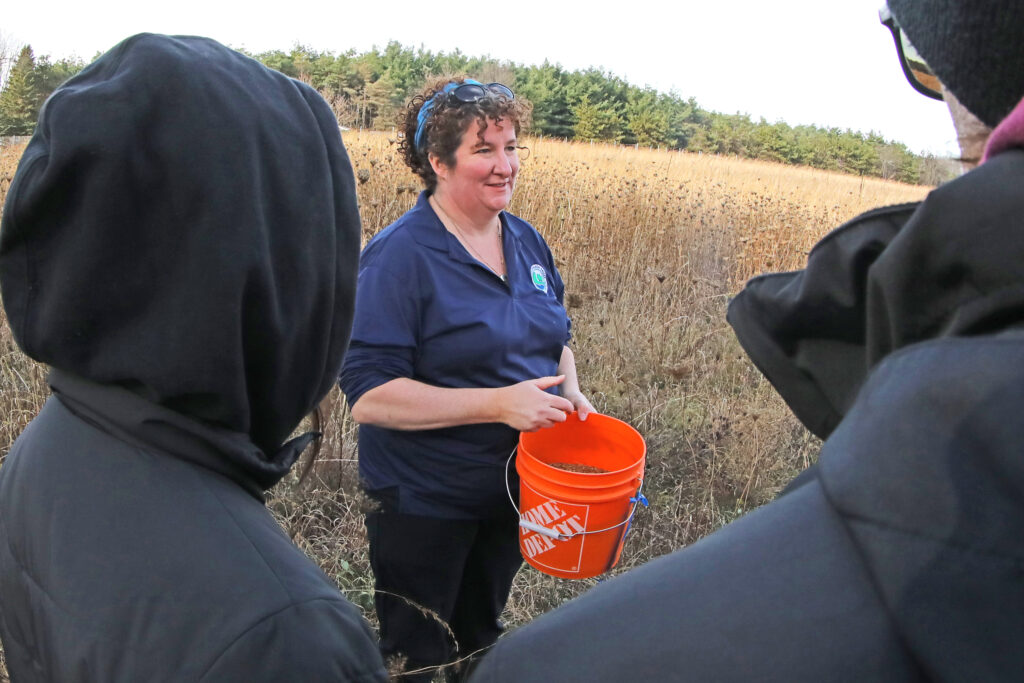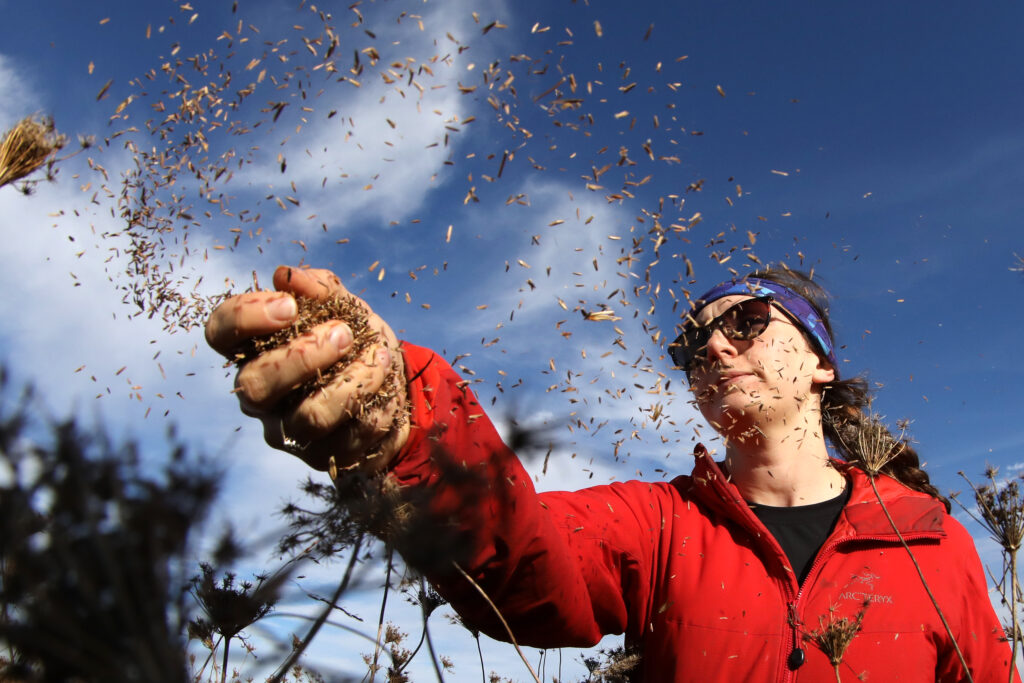Healthy grasslands, healthy soil: What we learned by over-seeding a field in rural Ontario
Want to hear a story about some on-the-ground — or rather, in-the-ground — impact?
On a sunny Wednesday in November, I joined a group of conservationists, volunteers and several WWF-Canada colleagues to over-seed — a planting approach that involves scattering seed directly on top of existing growth to minimize disruption to plants and habitats — a three-hectare piece of marginal farmland in rural Mono, Ont., northwest of Toronto.

Our host was the Nottawasaga Valley Conservation Authority (NVCA) — a three-year participant in WWF-Canada’s Nature and Climate Grant Program, presented in partnership with Aviva Canada — which has been doing exciting work to regenerate the site with native grasses and wildflowers.

Why did it need regeneration? For years, a tenant farmer used this plot of land to grow crops. But over time, it became less and less productive. The pH levels, compaction, and sand content of the soil made it tough for agricultural crops to thrive. So, the landowner and a neighbour with an adjoining property decided to convert the land use to a biodiverse native grassland.
That’s where the NVCA comes in. Working to populate the site with native grass and wildflower species that thrive in the current site conditions, the organization first began seeding in 2021.
The purpose of our work in November was to help fill in some of the gaps and improve the biodiversity of the site as the ecosystem becomes more established. (This project is supported by our NCGP program as well Ontario NativeScapes and Grasslands Ontario.)
During our visit, we scattered by hand seeds for native grasses (including Canada Wildrye, Little Bluestem and Switchgrass) and more than 30 types of wildflowers (including Tall Coreopsis, Ironweed, and Showy Tick Trefoil). Walking up and down the field, we sparsely tossed seeds onto the ground where they’ll take hold overwinter, pressed down into the soil by the snowpack. This low-tech approach was not only fun — it felt a bit like we’d gone back in time! — it also minimized disruption to the native flowers and grasses that have already grown in on the site.

After we emptied our seed buckets, Shannon Stephens, NVCA’s Healthy Waters Program Coordinator, helped us measure how this work is affecting the soil. We did test using a soil penetrometer, a spiked device that we plunged into the ground to measure the compactness of the soil.
In general, the less compact the soil, the better equipped it is to support organic matter and root growth. We also did a water infiltration test, in which we dug a small hole, poured water in it, and timed how long it took for the liquid to stop pooling and absorb into the soil.
Both tests showed delivered some good news. We learned that the soil is becoming less compact: At the start of the project, the ground was so hard that the penetrometer couldn’t even break through it, but during our visit, the same measurement showed softer earth with a slight remnant layer of moderately compacted soil. We also saw that the soil can absorb water faster! At the outset of the restoration project, the NVCA’s water infiltration tests took hours, but on our field day, it took only about 35 minutes for three inches of water to disappear.
This means the soil will be less likely to erode or be washed away during rains. It also makes the site better able to handle heavy rainfall and flooding events, since water can more easily seep down into the less-compacted soil, almost like a sponge. It’s exactly what we want to see as we continue to face extreme weather events caused by climate change.
We’re also optimistic that the native grasses we planted are allowing the site to capture and store more carbon underground. Like most native plants, these grasses convert sunlight, water and carbon dioxide from the air into sugars, which travel down through their root systems, where they tend to stay. This process actively feeds what we call the soil food web — a rich mix of organic matter and organisms that decompose underground. Because the root structures of native grasslands are so deep, they simply create more space for more nutrient-dense — and carbon-rich — soil. While we didn’t do any carbon monitoring during our visit, we look forward to seeing some results next field season.

The restoration of this small strip of new native grassland is a slow and patient process. While it might seem a minor act, it’s contributing to something very important. In WWF-Canada’s recent Restoring Lost Habitats in Canada report, we identified 3.9 million hectares of converted lands across Canada that, if restored, would help curb biodiversity loss and climate change. Our report found hotspots in southern B.C., Manitoba, Quebec, and Ontario where restoration work would be most impactful, including the stretch of land where the Mono site is situated.
By working to create a healthy native grassland system, the NVCA is helping protect against the effects of climate change, sequestering carbon from the atmosphere and creating valuable habitat for at-risk birds, insects and animals — all while improving soil health.
That’s the kind of growth we all want to see!
Three fun facts about native grasslands:
- Not a lot of people know that native grasses are actually host plants for a beautiful group of shy little orange butterflies called Skippers, named for the way they gracefully skip and glide from stem to stem.
- Perennial native grasses also serve an important function in grassland ecosystems by acting as scaffolding for tall wildflowers that would otherwise flop over. They need each other and live in symbiosis.
- Native grasses exude sugars and proteins into the soil, where they feed beneficial microbes and fungi.
Ryan Godfrey is an expert botanist and a Specialist, Community Action at WWF-Canada.

